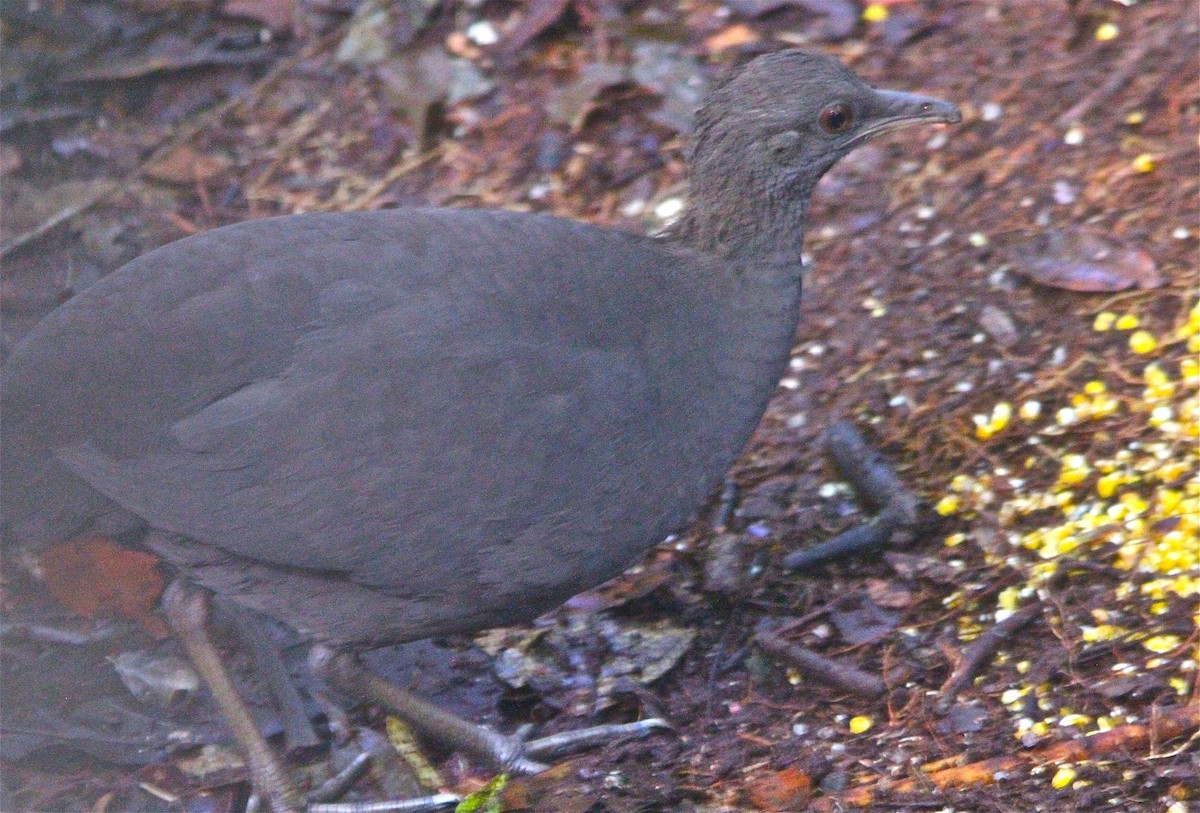Cinereous Tinamou
A species of Lesser Forest Tinamous Scientific name : Crypturellus cinereus Genus : Lesser Forest Tinamous
Cinereous Tinamou, A species of Lesser Forest Tinamous
Botanical name: Crypturellus cinereus
Genus: Lesser Forest Tinamous
Content
Description General Info
 Photo By Don Roberson
Photo By Don Roberson Description
The cinereous tinamou is a shy and secretive Tinamou. It is approximately 29–32 cm (11–13 in) in length, and the male bird weighs around 435 grams (15.3 oz) and the female of the species weighs 549–602 grams (19.4–21.2 oz). It is colored similar to the Berlepsch's tinamou in that it is dark brown to sooty brown or brownish black in coloration. It tends to be a tad more brown than the Berlepsch's tinamou. It is recognized by its smoky-grey with reddish-brown crown and nape. The feather shafts on side of its head are white, which shows through on occasion. Their color helps them blend with the environment making it harder for predators to detect them. The under parts of the bird are only slightly paler than the body, and the legs appear a dull orange to yellow. They have a light-colored eye ring. Their bill has a dark upper mandible and a yellow lower mandible. In general, their bill is very similar to the Berlpesch's tinamou's except it trends smaller and thinner. The females are generally slightly larger in size then the males. 
Size
32 cm
Nest Placement
Ground
Feeding Habits
Cinereous Tinamou predominantly feeds on fruits, seeds, and invertebrates, with a notable consumption of ants, mole-crickets, and pentatomids. They forage on the ground, using their bill to find food rather than scratching. Chicks rely more on insects, while adults have a varied diet that shifts seasonally.
Habitat
Cinereous Tinamou typically inhabits lowland tropical rainforests, including both primary forest and secondary growth areas, which are common in regions with varzea or flooded forest ecosystems. They are found at elevations up to 700 meters, preferring areas with dense undergrowth near streams or swampy woods. Cinereous Tinamou is also found in transitional zones to savannas, bushy regions with scattered trees, and has been known to adapt to agricultural landscapes, such as coffee and cocoa plantations. They largely avoid open areas, favoring thick, dark, and sheltered environments within the forest understorey.
Dite type
Omnivorous
General Info
Feeding Habits
Bird food type
Behavior
The cinereous tinamou is diurnal. When they are frightened or surprised they usually run off very quickly. Their instincts have adapted to act quickly since they live their lives on the ground and have to flee quickly to avoid predators so they are rarely seen by humans. They have a tendency to walk or run rather than to fly. They are capable of flight, but it is unusual and short. While the cinereous tinamou may only be in flight for a short duration, their flight is strong and direct. They tend to occur either alone or in pairs, and generally do not travel in groups. 
Distribution Area
This species is native to southern Colombia, southern Venezuela, Suriname, Guyana, French Guiana, northern and western Brazil, eastern Ecuador, eastern Peru, and northern Bolivia. Within Brazil, it occupies the Amazon Basin south to Mato Grosso and east to Pará. 
Species Status
The IUCN classifies this tinamou as Least Concern, with an occurrence range of 5,920,000 km (2,290,000 sq mi). It is considered the most common tinamou in Suriname, and is considered uncommon in Peru. The threat to its existence is similar to that of all forest birds, and that is deforestation and fragmentation of the remaining habitat. It is believed that it loses 14.1-17% of its habitat over 3 generations. 

 Photo By Don Roberson
Photo By Don Roberson Scientific Classification
Phylum
Chordates Class
Birds Order
Tinamous Family
Tinamous Genus
Lesser Forest Tinamous Species
Cinereous Tinamou